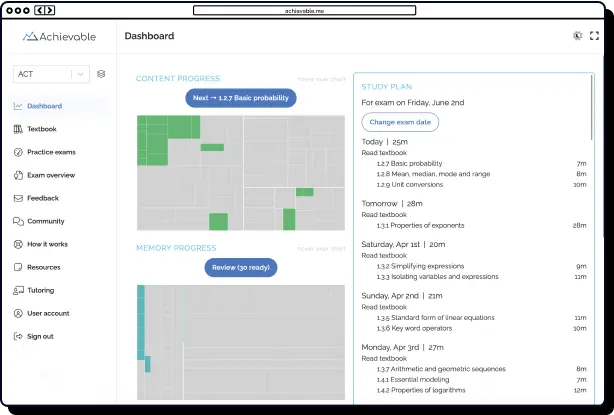
Open your own gym: Essential tips




Table of contents
Are you passionate about fitness, driven by a vision, and ready to create a space that inspires movement? Opening a gym is more than just stocking equipment and decorating with motivational quotes; it's about building a brand, fostering a loyal community, and launching a business that stands out in a competitive industry.
Whether you’re a certified trainer ready for your next leadership role or a dedicated fitness enthusiast with an entrepreneurial spark, this guide will outline the essential steps to transform your dream of owning your own gym or fitness center into a thriving reality.
Let’s break it up into a couple of steps.

1. Start with your vision
Before you draft business plans or select gym equipment, clarify the specific type of gym you want to create:
- A boutique HIIT studio?
- A community-driven CrossFit box?
- A luxury wellness space with personal training and yoga?
- A no-frills, open-24/7 lifting gym? Are you trying to prioritize utility over luxury?
Defining your gym’s niche will determine your pricing, marketing plan, membership structure, and differentiation in a crowded market. Consider who your target audience is, what your gym’s core values are, and how you stand apart from gyms already on the block.
Ask yourself: Who am I creating this space for? What kind of fitness experience do I want to deliver? What pain point am I solving?
While specific credentials are not strictly required, holding a recognized fitness or strength and conditioning certification can greatly enhance the credibility of your business. Becoming an NSCA-Certified Personal Trainer (CPT), leveraging a Certified Strength and Conditioning Specialist (CSCS) certification, or achieving the NASM Performance Enhancement Specialist credential demonstrates expertise and signals commitment to safety, progression, and quality training. Gym owners and coaches with strong qualifications forge trust and loyalty with prospective clients, giving your gym an important edge.
2. Write a business plan (and yes, you need one)
This doesn’t have to be 50 pages long, but it does need to answer key questions like:
- Startup costs: Equipment, lease, renovations, licenses
- Revenue streams: Memberships, personal training, group classes, merch
- Break-even point: How many clients will it take to stay profitable?
- Marketing strategy: How will people find you?
- Team structure: Will you hire trainers or run solo?
Don’t forget, you’ll also need this plan if you're applying for a loan, pitching to investors, or renting a commercial space.
3. Find the right location
Location can make or break your gym. Ideally, you want:
- High foot traffic or easy accessibility
- Sufficient parking for your gym members
- Proper zoning that allows for a fitness facility
- Ample space tailored for your training style, including room for gym equipment and managing noise levels
Don't underestimate the power of visibility. Positioning your facility in a prominent spot and installing a clear, eye-catching gym sign can play a critical role in your local marketing impact, often rivaling the reach of a well-placed social media ad.

4. Get legal and financials in order
- Form a legal business: LLCs are common for gyms
- Obtain permits: City licenses, health, and safety inspections
- Insurance: Liability insurance is a must
- Banking: Set up a business bank account and accounting system
- Waivers and contracts: Protect yourself and your clients
5. Buy the right equipment (not all at once)
Resist the urge to overbuy. Start with essential equipment tailored to your gym’s primary focus:
- Strength training? Barbells, dumbbells, squat racks
- Functional fitness? Kettlebells, plyo boxes, sleds
- Group classes? Mats, resistance bands, sound system
The National Strength and Conditioning Association (NSCA) offers a comprehensive safety checklist for maintaining exercise facilities and equipment. Using this and other vetted resources will ensure that your exercise facility operates in compliance with established industry standards and NSCA rules, which will help prevent accidents and injuries.
Pro tip: To keep initial costs down, consider leasing or purchasing gently used commercial-grade equipment. This smart approach helps you save money while building the foundation for a successful gym.
6. Build a brand, not just a gym
Your brand is more than your logo; it's the feeling people get when they walk through your doors. From your gym name and color scheme to your music, signage, and staff energy, it all tells a story.
Use Instagram, TikTok, and community events to show your vibe, your workouts, and your wins. People don’t just join gyms, they join movements.
7. Hire (or be) the right people
Your trainers and front desk staff play a pivotal role in shaping your gym’s reputation and long-term success. Hiring team members who hold a respected strength and conditioning or personal training certification instantly boosts your facility’s credibility. Friendly, knowledgeable, and enthusiastic employees with impressive credentials become the backbone of a thriving fitness community dedicated to excellence.
Seek out staff with NASM-PES, ACE, ISSA, or NSCA CPT certifications who can deliver high-quality personal training services. For specialized strength and conditioning gyms or facilities focused on athletic performance, prioritize trainers holding the CSCS certification, which is widely regarded as the gold standard for coaching athletes. If your offerings include classes like yoga or Pilates, research the best certification options and collaborate with experts to ensure your fitness space is optimized for various activities.
Can’t hire staff right away? No problem. Demonstrate your commitment to excellence by consistently showing up with energy and professionalism from Day 1.

8. Launch strong (but be ready to pivot)
Grand openings are great, but what really matters is retention. Offer trial classes, referral discounts, and create a culture that makes people want to come back (and bring friends).
Asking for feedback and tracking what works is important for your gym’s success. Don’t be afraid to change direction as you learn what your community really wants.
Opening your own gym is equal parts hustle, heart, and heavy lifting. But if you’re passionate about fitness and committed to serving your members well, you’ve already got the most important ingredients. Start small, think big, and remember, your gym isn’t just a business. It’s a space where people change their lives. And that’s worth building.

